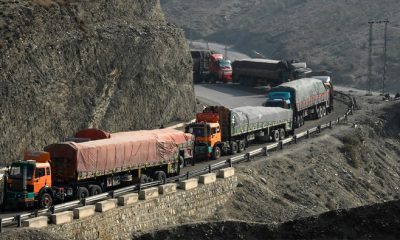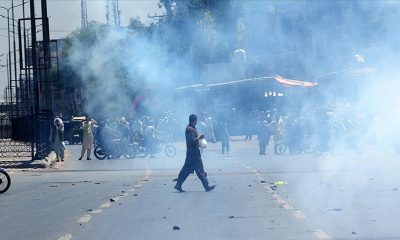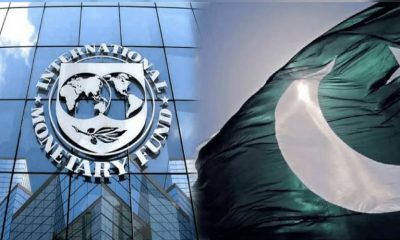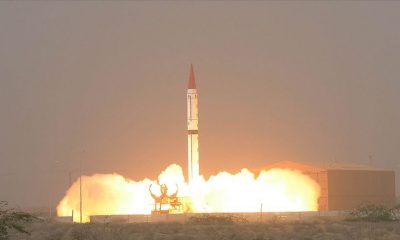ASIA
Pakistan looks to ban Imran Khan’s political party over receiving “illegal funds”
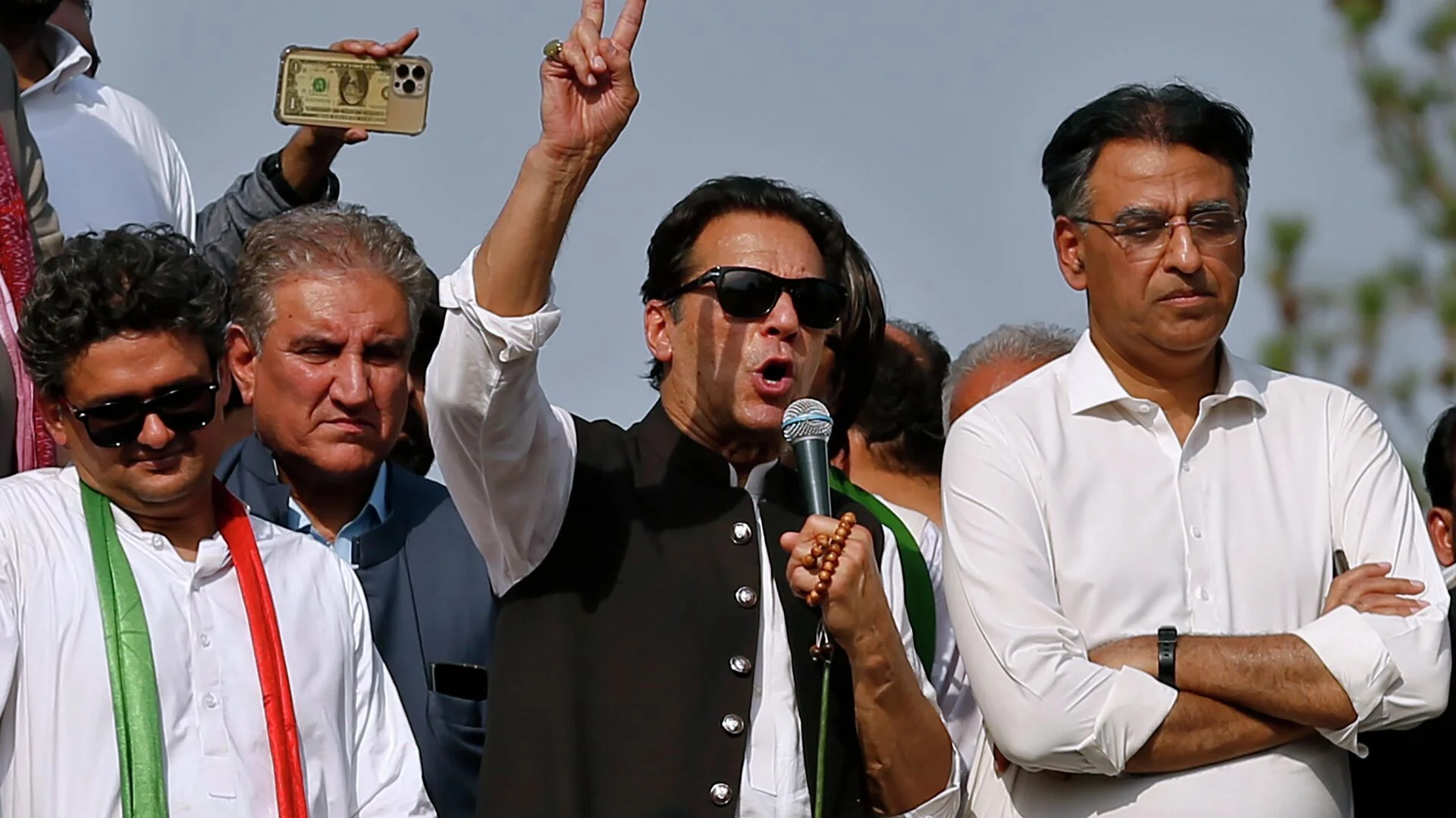
The government of Pakistan is seeking to put a full ban on former Prime Minister Imran Khan’s political party over an allegation that it has received funds from foreign countries which is illegal according to Pakistan legislation. A three-member Election Commission bench headed by Chief Election Commissioner Sikander Sultan Raja announced the verdict in capital city Islamabad. The report that has dragged on for years, accused Khan’s political party (PTI) of receiving millions of dollars in illegal funds from at least 34 foreign countries, including US, UAE, UK and Australia.
Khan did not immediately react to the matter, but a spokesman from his party, has denied the allegation and said to challenge this ruling. However, PTI had openly confirmed funds were received from overseas Pakistan in a legal way. Political rift is now widened and the election commission ruling can be challenged in top court. The decision is a blow to Imran Khan as even his former aide Akbar Baber also filed an inquiry complaint, who alleged the party’s finances included undeclared foreign funding.
Political uncertainty could further loom between Khan’s party and his rival Prime Minister Shehbaz Sharif’s administration which already started proceedings to ban Khan’s party from politics, a move could further strengthen Sharif and possibly drag Khan who has been calling for early elections since his ouster as Prime Minister.
Khan’s popular support and Pakistan’s future political scenario
Khan, a cricketer icon turned politician, who had ruled the country as Prime Minister from 2018 until April 2022 was forced to resign after losing a confidence vote as what he claimed was a conspiracy orchestrated by the US. Now Khan is in limbo and facing a ban from politics, and must step down from the party’s head if all the accusations come true. It could also be a huge setback from Khan’s political career as the country is set to have new elections within a few months.
Since his ouster, Khan has staged a number of demonstrators across Pakistan and called on his supporters to continue protests until his successor Sharif agrees for a new election. Khan has proved himself as an established politician and still commands considerable public support, particularly among the country’s middle classes and youth. It is not easy for Sharif to get rid of Khan in the shortest way. In Punjabi, the country’s most populous province, Khan was able to pull off a shock defeat to Sharif’s ruling Pakistan Muslim League. The Pakistan government under Sharif rule also faced difficulty in preventing Khan from holding a massive and planned rally in the capital of Islamabad and around the country.
Hundreds of his supporters took to the streets and the intensity of the demonstrations had forced Pakistani forces to carry overnight raids on his supporters across the country, and arrested hundreds of them. In one case a police officer was killed after entering a home of one of Khan’s supporters in Lahore city as a result of physical clashes turned into gunfire. Khan in that time was also accused of creating a civil war-like situation through violent protest.
Pakistan is facing political instability at a time when its currency fell more than 14% against the dollar in July, and it is the biggest monthly slide in decades. The sole reason behind the decline could be prolonging political uncertainty as well as delaying an IMF bailout.
ASIA
China retaliates with 84% tariff on US goods
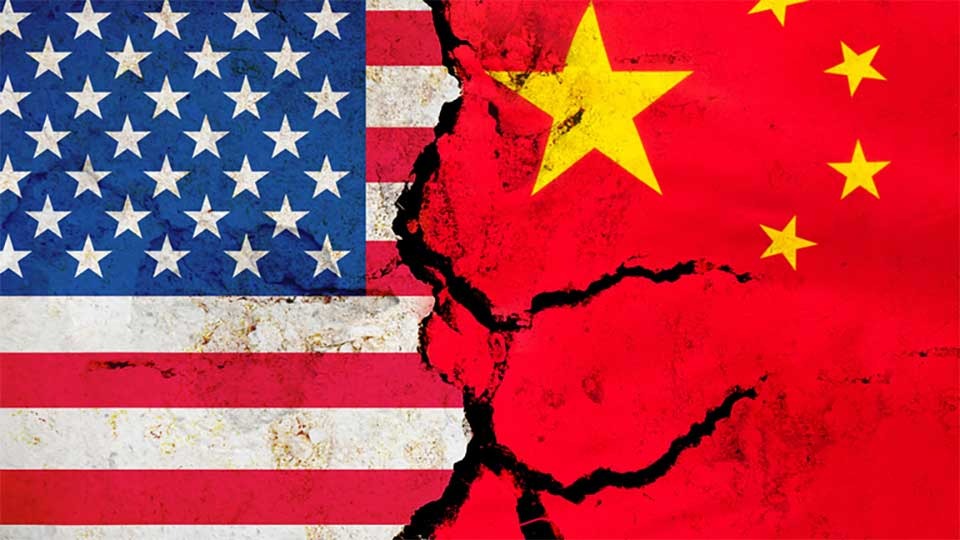
China has announced it will impose an additional 50% tariff on all American imports, in response to US President Donald Trump’s similar tariff increases on its goods. This raises China’s total tariff on US goods to 84%.
The world’s second-largest economy also pledged to implement new supportive policies in a timely manner to counter external shocks.
Analysts warn that tit-for-tat retaliation and high tariffs risk further decoupling with the US, but noted that Beijing’s move is a clear signal that it will resolutely defend its interests and fight to the end.
US stock index futures fell sharply following China’s announcement of the retaliatory measures.
Trump’s action, which increased the total of additional import taxes since he took office in January to 104%, took effect at noon on Wednesday.
The tax to be implemented by Beijing will take effect at noon on Thursday, raising the total of additional tariffs raised by Beijing to 84%.
“China will resolutely defend its interests, the multilateral trading system, and the international economic order,” the Ministry of Commerce said in a statement online.
Zhang Zhiwei, president and chief economist at Pinpoint Asset Management in Hong Kong, said: “China has sent a clear signal that it will maintain its stance on trade policies despite high tariffs in the US.”
In addition to filing a complaint with the World Trade Organization over the US’s new tariffs, the Chinese Ministry of Commerce has added six US companies – Shield AI, Sierra Nevada, Cyberlux, Edge Autonomy Operations, Group W, and Hudson Technologies – to its list of unreliable entities.
It also imposed export controls on 12 American companies, banning Chinese companies from supplying these companies with dual-use items that have both civilian and military applications.
Those facing restrictions are American Photonics, Novotech, Echodyne, Marvin Engineering, Exovera, Teledyne Brown Engineering, BRINC Drones, SYNEXXUS, Firestorm Labs, Kratos Unmanned Aerial Systems, Domo Tactical Communications, and Insitu.
Meanwhile, the Chinese government intervened in capital markets to bolster investor confidence by increasing A-share purchases through its “national team” of state-backed funds.
Premier Li Qiang said at a symposium with economists and entrepreneurs on Wednesday that the Chinese economy had gained good momentum in the first quarter and acknowledged external pressure.
“We have made a full assessment and are preparing for various uncertainties,” Li said, according to state broadcaster CCTV.
Li, China’s number 2 political figure, vowed new measures to stabilize the national economy, while setting his sights on boosting domestic markets.
“We will regard the expansion of domestic demand as a long-term strategy,” he added.
The world’s second-largest economy will release March trade figures and first-quarter GDP next week.
Before announcing its latest retaliation, Beijing released a comprehensive framework on Wednesday reaffirming its stance on trade relations with the US, warning that tariffs will “ultimately backfire,” while leaving the door open for an “equal dialogue” between the countries.
ASIA
Japan prepares for tariff negotiations with US
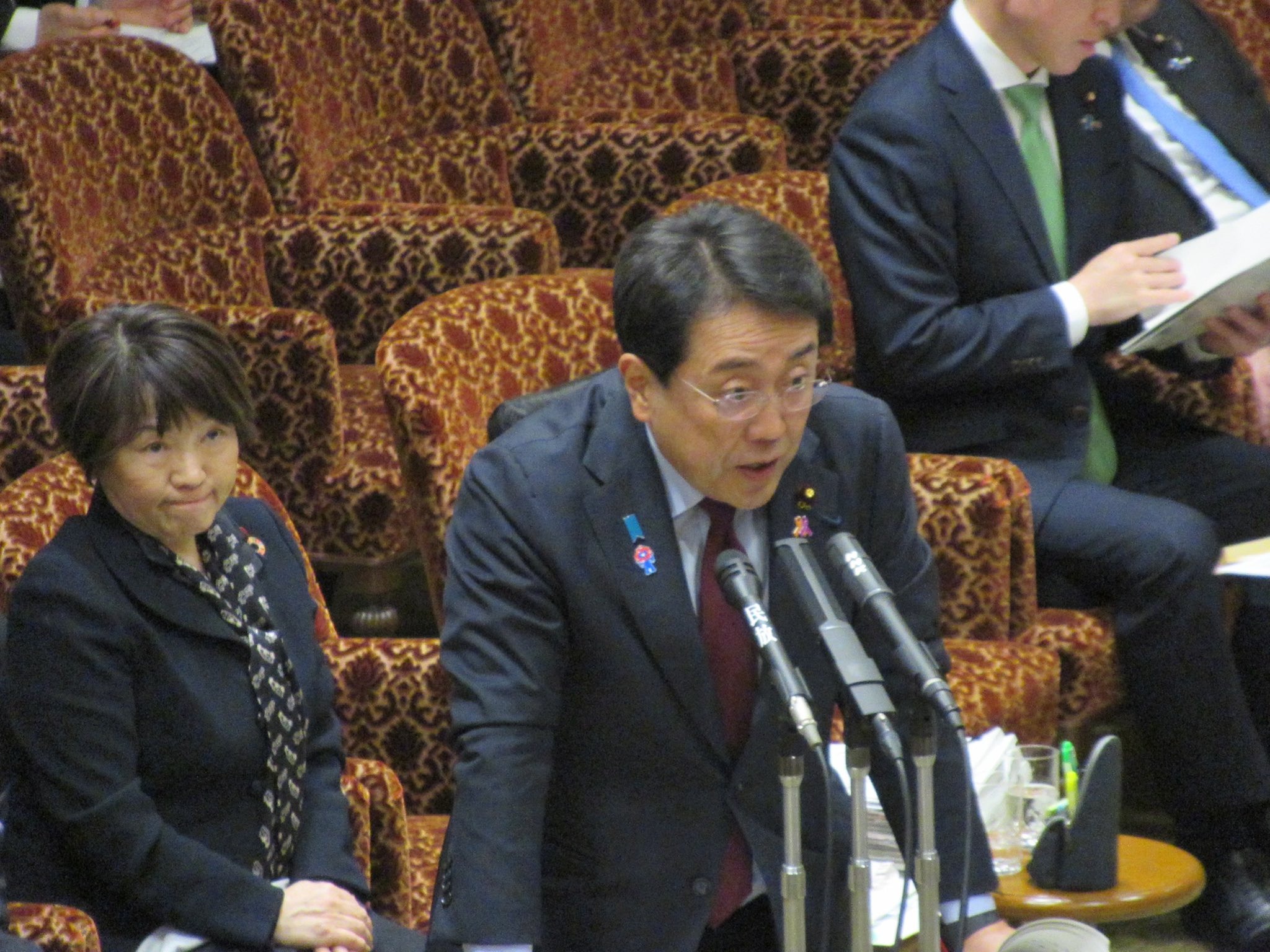
Japanese Prime Minister Shigeru Ishiba has signaled his intention to use every means to mitigate risks to Japan’s economy by selecting his close aide and key economic policy figure, Ryosei Akazawa, to lead tariff negotiations with the US.
Akazawa, who serves as the state minister in charge of economic and fiscal policy, warned on Tuesday that US President Donald Trump’s “reciprocal” tariffs could negatively impact Japanese exports and the global economy. Akazawa told lawmakers he would maintain a “sense of urgency.”
Shunichi Suzuki, a former finance minister who chairs the ruling Liberal Democratic Party’s General Council, said Ishiba had chosen a cabinet member with Akazawa who “can act as a playmaker.” He added, “I have worked with him, and he is very talented.”
As the state minister in charge of economic and fiscal policy, Akazawa coordinates the government’s economic agenda across institutions, giving him access to various bargaining chips and flexibility in negotiations.
Until now, Minister of Economy, Trade and Industry Yoji Muto and Foreign Minister Takeshi Iwaya had been in contact with the US side regarding tariffs through their own channels.
Akazawa is not the first person to lead key trade negotiations with the US in this role.
From 2013, Akira Amari served as the point person for the Obama administration in the Trans-Pacific Partnership talks. Toshimitsu Motegi led negotiations for the Japan-US Trade Agreement during Trump’s first term and was described as a “tough negotiator” by his American counterpart, then-US Trade Representative Robert Lighthizer.
Akazawa, a former Ministry of Transport bureaucrat, has also served as state minister in the Cabinet Office and state minister of finance. He appears to have policy expertise in areas expected to be covered by the tariff talks.
Meanwhile, the US’s selection of Treasury Secretary Scott Bessent as its chief negotiator with Japan signals that the dollar-yen exchange rate may also be addressed in the upcoming talks.
Trump’s tariffs are expected to deal a heavy blow to the Japanese economy. A failed response from Ishiba could become a liability for the prime minister as he leads his party into upper house elections this summer.
A senior Japanese official said, “The difference between Trump’s first and second terms is that he has even more power this time.”
Ishiba’s cabinet was already shaky within the LDP and suffered from low approval ratings. His government faces the difficult task of persuading affected industries domestically to abide by the outcome of the negotiation and preparing relief measures.
Yuichiro Tamaki, leader of Japan’s opposition Democratic Party for the People, told reporters on Tuesday, “Even as officials negotiate, there will soon come a time when the prime minister himself must try to break the deadlock with a leaders’ summit.”
ASIA
China releases white paper on US trade relations

The State Council Information Office of China yesterday released a comprehensive white paper titled “China’s Position on Certain Issues in China-US Economic and Trade Relations,” outlining its official position on ongoing trade disputes with Washington.
The white paper addresses the nature of economic relations between the two countries, the implementation of the Phase One Trade Agreement, compliance with World Trade Organization (WTO) rules, and unilateral policies of the US.
In the introduction, Beijing stated that China and the US are the world’s largest developing and developed countries, respectively, emphasizing that economic and trade relations between the two are of great importance for both bilateral and global stability and development.
It noted that since the establishment of diplomatic relations in 1979, bilateral trade volume has increased from $2.5 billion to approximately $688.3 billion in 2024.
The white paper stated that the foundation of China-US economic and trade relations lies in the understanding of “mutual benefit and win-win.”
It was noted that the two countries are important trading partners for each other, with rapidly increasing trade in goods and services.
China is the US’s largest goods export market and second-largest source of imports; the US is China’s third-largest export market and second-largest source of imports.
Beijing argued that it does not pursue a trade surplus, and that the trade balance is a result of structural problems in the US economy, the comparative advantages of the two countries, and the international division of labor.
It was reported that when local sales through trade in goods, trade in services, and investments are considered together, the economic benefits obtained by the two countries are roughly balanced.
Additionally, it was stated that China is taking active steps to increase imports through platforms such as the China International Import Expo (CIIE).
The white paper gave extensive coverage to the Phase One Trade Agreement signed on January 15, 2020.
It was argued that the Chinese side has meticulously fulfilled its obligations under the agreement, despite challenges such as the COVID-19 pandemic, supply chain disruptions, and global economic recession.
In this context, it was stated that intellectual property protection has been strengthened, market access has been increased in the agricultural and food products and financial services sectors, and forced technology transfer has been prohibited.
In contrast, it was pointed out that the US side has not fulfilled its obligations under the agreement.
According to the white paper, Washington, contrary to the spirit of the agreement, tightened export controls, increased sanctions against Chinese companies, and imposed investment restrictions.
In particular, regarding technology transfer, it was argued that the US, as in the case of TikTok, is forcing companies to sell and preventing investment cooperation under the pretext of “national security.”
In the field of agriculture, it was stated that the US has not recognized China’s avian influenza-free zone status and has not responded to requests for cooperation on pesticides.
It was also claimed that the US has engaged in restrictive and discriminatory practices in financial services and exchange rate issues.
In addition, Beijing emphasized that since joining the WTO in 2001, it has adhered to the principle of free trade and has strictly complied with WTO rules.
It was stated that in this process, more than 2,300 central laws, regulations, and rules, and more than 190,000 local regulations have been reviewed and revised.
It was stated that customs duty rates have been reduced in line with WTO commitments and have even been further reduced unilaterally in recent years.
It was argued that subsidies are provided within the framework of WTO rules and within reasonable limits, and that relevant notifications are made in a timely manner.
The white paper stated that accusations that China creates “overcapacity” and disrupts international markets with “non-market economic behaviors” such as subsidies are “irrational and untrue.”
It was emphasized that such claims are trade protectionism and will harm global supply chains.
On the other hand, it was noted that China is constantly improving its business environment, expanding market access for foreign investments, and treating all domestic and foreign businesses equally.
A significant part of the white paper was devoted to criticizing the US’s unilateral and protectionist policies. It was stated that Washington arbitrarily expanded the concept of “national security,” used export controls as a political weapon (especially in the fields of semiconductors and artificial intelligence), and applied Section 301 and Section 232 customs duties that clearly violate WTO rules.
It was pointed out that the WTO panel found Section 301 tariffs to be against the rules. It was noted that these tariffs did not solve the US trade deficit, but rather increased costs for US importers and consumers.
Similarly, it was stated that Section 232 tariffs applied to steel and aluminum products were used not for “national security” reasons, but to put pressure on other countries in negotiations.
It was warned that US attempts to remove China’s Permanent Normal Trade Relations (PNTR) status violate WTO rules and would seriously damage bilateral relations.
It was stated that using the fentanyl issue as an excuse to increase customs duties is baseless and will not solve the problem.
Finally, it was pointed out that the “reciprocal customs duties” implemented by the US will harm both the US economy and global trade.
In the conclusion of the white paper, it was reiterated that China and the US are the world’s two largest economies and that cooperation between them is critical for global peace and development.
It was emphasized that it is natural for the two countries to have differences, but these should be resolved through equal dialogue and mutually beneficial cooperation rather than conflict.
Beijing, using the expressions “There are no winners in trade wars, and protectionism is a dead end,” called on the US side to move in the same direction as China, and to act in accordance with the principles of mutual respect, peaceful coexistence, and win-win cooperation.
It was stated that the two countries can address their concerns through dialogue and jointly promote the healthy, stable, and sustainable development of bilateral economic and trade relations.
-
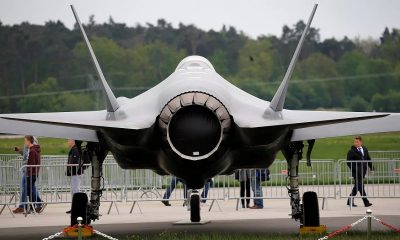
 EUROPE2 weeks ago
EUROPE2 weeks agoF-35 debate intensifies across Germany and Europe
-

 ASIA2 weeks ago
ASIA2 weeks agoBeijing’s energy rules threaten Nvidia H20 chip sales in China
-

 EUROPE2 weeks ago
EUROPE2 weeks agoHuawei lobbying investigation leads to searches at EP offices in Strasbourg
-

 EUROPE2 weeks ago
EUROPE2 weeks agoLeaked draft reveals German coalition disagreements on key policies
-
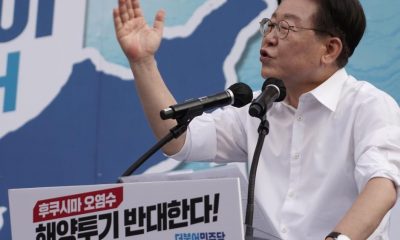
 ASIA2 weeks ago
ASIA2 weeks agoSouth Korean opposition leader Lee Jae-myung acquitted in election law case
-
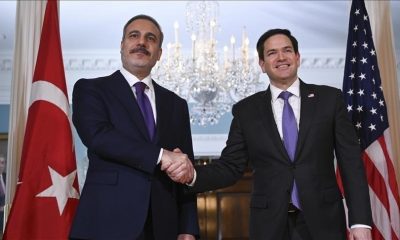
 DIPLOMACY2 weeks ago
DIPLOMACY2 weeks agoFidan and Rubio discuss Syria, Gaza, and defense in US meeting
-

 MIDDLE EAST2 weeks ago
MIDDLE EAST2 weeks agoUS presents conditions to HTS for potential sanctions relief
-

 AMERICA2 weeks ago
AMERICA2 weeks agoSecret CIA files suggest the Ark of the Covenant was found






